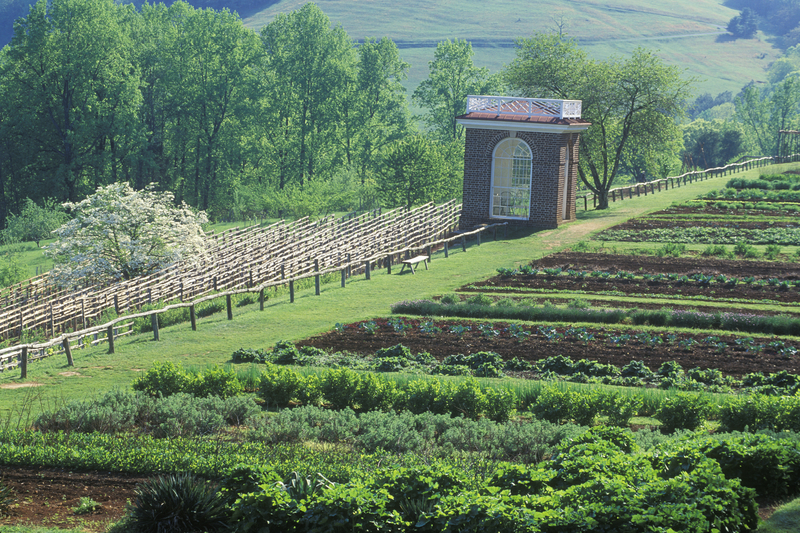Lucky for us, Jefferson took extensive notes so his gardening wisdom was able to live on long after he was gone. We know how influential Jefferson was when it came to U.S. politics so we would be smart to listen to his tips when it comes to gardening as well!
1. Experiment … extensively
Jefferson once wrote that the “greatest service which can be rendered to any country is to add a useful plant to its culture.” When he traveled throughout our young country and abroad, Jefferson often exchanged seeds and seedlings with other gardeners. By placing the garden on a south-facing slope, he was able to capture abundant sunshine.
Creating this unique form of “hanging garden” involved the removal of about 600,000 cubic feet of red clay and the creation of a 1,000-foot-long rock wall that was 15-feet tall in some places.
2. Grow what you eat
His Monticello garden featured 330 different varieties of vegetables and 170 varieties of fruits. According to Monticello gardening expert Peter Hatch, Jefferson’s garden inspired a “revolutionary cuisine.”
3. Go natural
When his daughter, Martha, wrote to him while he was in Philadelphia serving as secretary of state, she complained about insects damaging the vegetables at Monticello.
He responded, “I suspect that the insects which have harassed you have been encouraged by the feebleness of your plants; and that has been produced by the lean state of the soil.”
He recommended the garden be covered that winter with “a heavy coating of manure. When is rich it bids defiance to droughts, yields in abundance, and of the best quality.”
4. Keep notes
He recorded his gardening efforts in his Garden Book, a personal journal he maintained from 1766 to 1824. Hatch reports that Jefferson was not afraid to admit defeat in certain gardening circumstances. “On one page in 1809 the word failed is written down 19 times,” Hatch writes. “He had a holistic view, as we say today, of the gardening process. It is the failure of one thing that is repaired by the success of another.”
In his “A General Gardening Calendar,” Jefferson’s only published horticultural work, he offered a monthly guide for kitchen gardening.
5. Make your garden an area for retreat
For example, he designed and built an octagonal pavilion in a central garden location at Monticello and used this spot as a location for reading, writing and even entertaining.
“No occupation is so delightful to me as the culture of the earth,” he once wrote, “and no culture comparable to that of the garden.”
Have you followed any of Thomas Jefferson's advice when cultivating your own garden?
Article Source: Off The Grid News

For those farmers near the coast, 3% seawater in your water equals no expensive additives/fertilizer costs. Ancient knowledge.. shhh, don’t tell Monsanto..